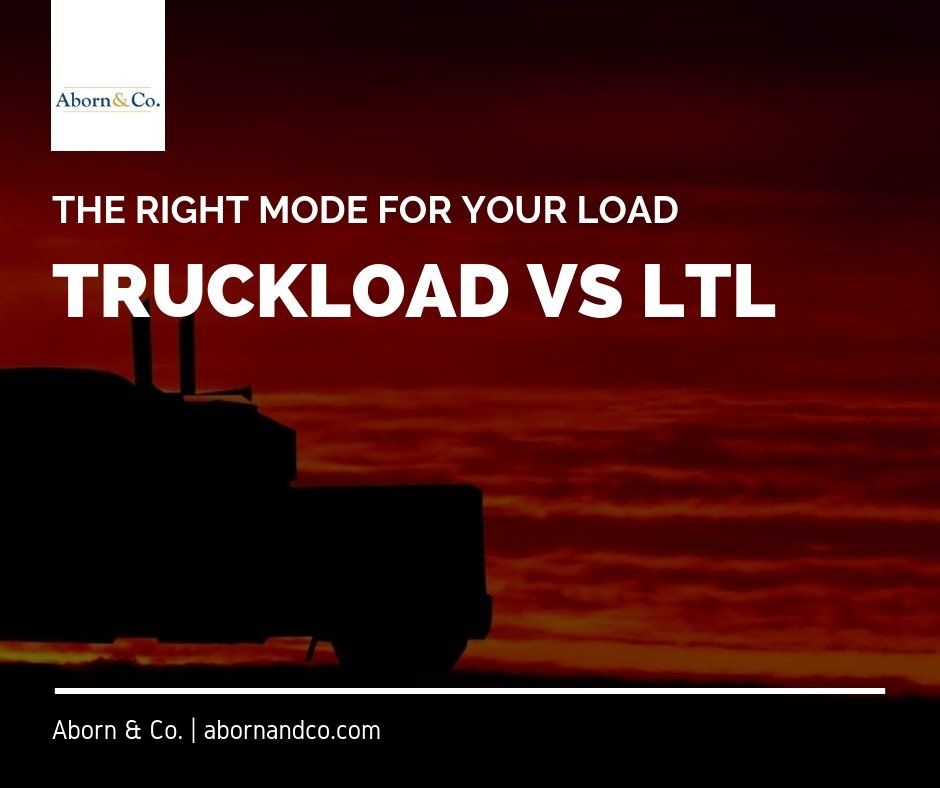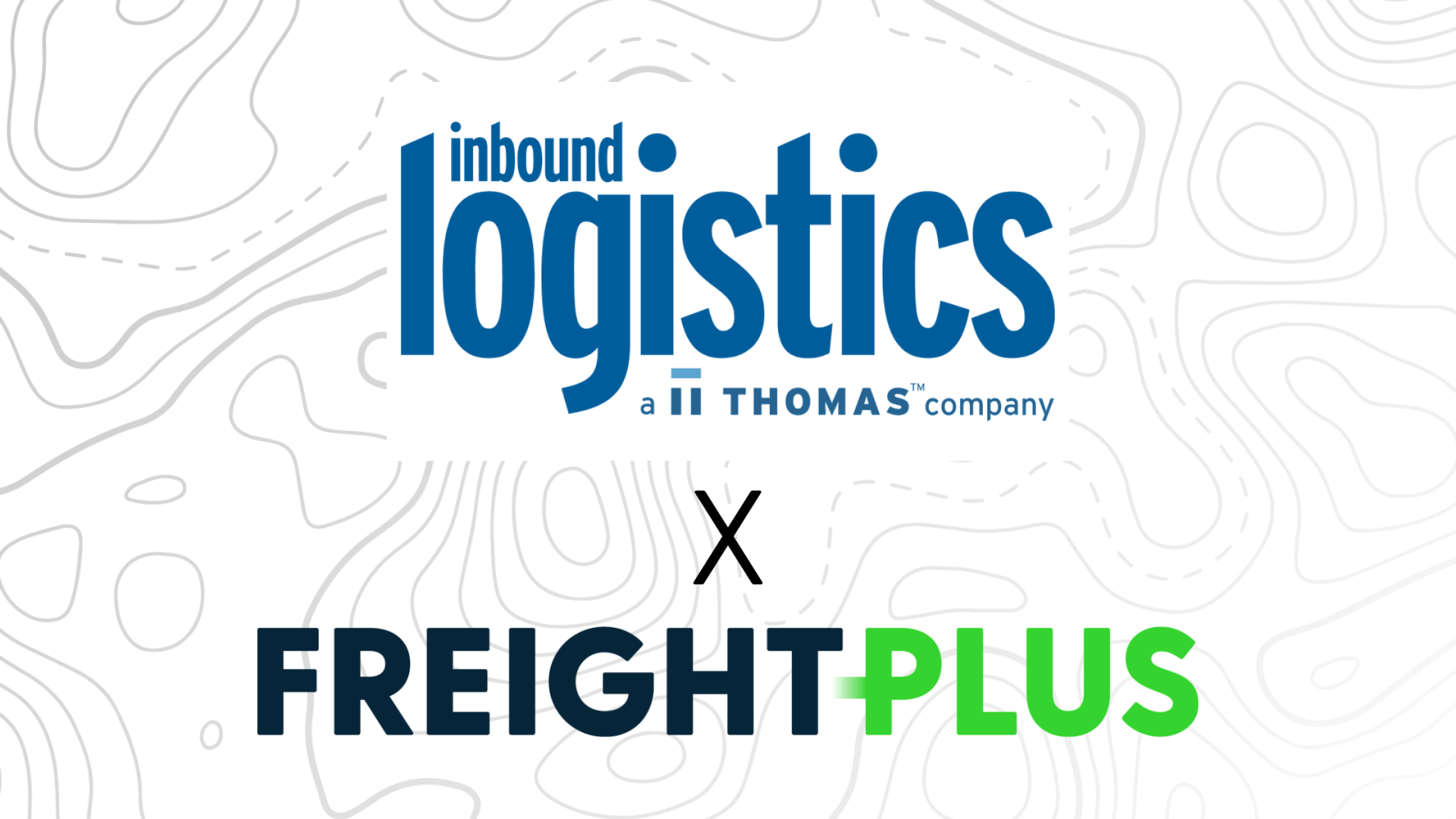Truckload vs LTL: The Right Mode for your Load
It’s no secret that this has been a challenging year for ground freight. The trucking capacity crisis and driver shortage have many shippers rethinking which strategy they use to approach their inland cargo. Are you doing all you can to ensure efficient shipping over the road?
The first step to knowing you are making the right decisions with your freight is understanding the impact mode can make on cost, speed, and risk.
Be sure to know these differences between truckload (TL) and less than truckload (LTL) before letting your product leave the warehouse.
WHY THEY ARE DIFFERENT
TL (Truckload / FTL) – Full truckload shipping typically means that one trailer is contracted to a single customer, shipper, or consignee. These shipments usually move from point A to point B.
LTL (Less than truckload) – Generally, a trailer mixed with freight from two or more customers, shippers, or consignees. LTL shipments will not just make multiple stops at different locations to pick-up and drop-off freight, but shipments are also loaded and unloaded at consolidation facilities.
COST
TL - Pricing for truckload is simple: you pay for a trailer to move from point A to B. As long as your goods aren’t overweight, out-of-gage, or require special handling instructions, it doesn’t matter if you are moving a hundred pound box of matches or forty-thousand pounds of candles. A truckload will cost a truckload, regardless of whether your shipment fills the space or reaches maximum legal weight. While the break-even point between TL and LTL varies, shippers moving standard freight are usually opting for TL when their goods weigh over 10,000 lbs, and/or they have over 10 pallets.
LTL - Which weighs more: a hundred pounds of bricks or a hundred pounds of feathers? If you’ve already heard that one, here’s a new one for you: Which costs more to ship via LTL?
What you are shipping matters to an LTL carrier. Since your freight is loaded alongside other shipments, you split the cost of the trailer with other shippers. You are only responsible for the weight, space, and difficulty of the shipment associated with your load. But how do carriers calculate that?
In addition to considering the length of haul as a TL carrier would, an LTL carrier will also consider the National Motor Freight Classification (NMFC) of that product.
Class is determined primarily by density and difficulty of transport. The scale goes from 50 to 500, moving from dense and durable (bricks) to light and fragile (ping-pong balls). Different freight classes (there are 18 of them) are based on weight, length, and height, density, ease of handling, value and liability from things like theft, damage, break-ability, and spoilage. For the most part, the lower the NMFC class number, the lower the freight charge. Dense and durable freight is more desirable to these carriers and will cost less per pound to move.
SPEED
TL - The shortest distance between any two points is a straight line and TL makes good on that law. With only one load to consider, a truck can go straight from origin to destination without having to stray from the natural path between the two. The only factor limiting how quickly it will arrive is a driver’s hours of service and the limits of capacity. TL shipments can travel about 450 miles per day. This daily average has been reduced by nearly 50 miles a day on average since ELD regulations went into effect.
LTL - Since LTL shipments are essentially “carpooling” in the same trailer, they don’t have the luxury of taking a straight line to their ultimate destinations. For example, a shipment going from Boston to Atlanta may include stops at terminals in Philadelphia and Charlotte along the way. These stops and diversions can reduce overall distance traveled to roughly 300 miles per day.
However, since LTL shipments don’t have to wait for a full truck to depart, they can be scheduled more frequently than TL shipments and present shippers with the opportunity to bring smaller shipments to market quicker.
Risk
There is always a risk of damage, delay, and loss when shipping your product over the road. Many damages, however, do not occur while freight is in transit, but when it is being handled at distribution centers and terminals.
Shipping via truckload has the advantage of only having the shipment handled twice. That is, once when brought onto the trailer and once when carried off.
LTL shipments may need to stop at several terminals before reaching their final destination, being unloaded and reloaded each time that a truck stops.
Let’s use our above example of a shipment moving from Boston to Atlanta. When it comes to handling, this looks more like three separate trips - from Boston to Philly, Philly to Charlotte, then Charlotte to Atlanta in one straight course. This means your product may be handled a few times, which leads to a higher risk of damage. Additionally, shipments can also be misloaded, improperly routed, and stolen.
Conclusion
As you can see, there really is no right answer in the debate between TL and LTL freight. Most optimized supply chains will utilize both forms of inland transportation, using them situationally and interchangeably when they best fit a given circumstance.
Shippers should ask themselves the following questions:
-Am I using the best routing given the needs of this shipment?
-Can we save money through intelligent routing and consolidations?
-Is my freight properly classified?
-Do I have freight that both/either TL and LTL carriers want to carry? (read our shipper of choice guide for more on that)
- Are we capturing our shipment data and using it to reduce costs, increase visibility, and improve efficiency?
Need help determining how to best optimize your inland freight? Contact Aborn & Co. today for a complimentary consultation with one of our Advantage Managed Freight Solution experts!
Listen to our podcast for free below or simply search 'Consulting Logistics' on your favorite podcast player of choice.











